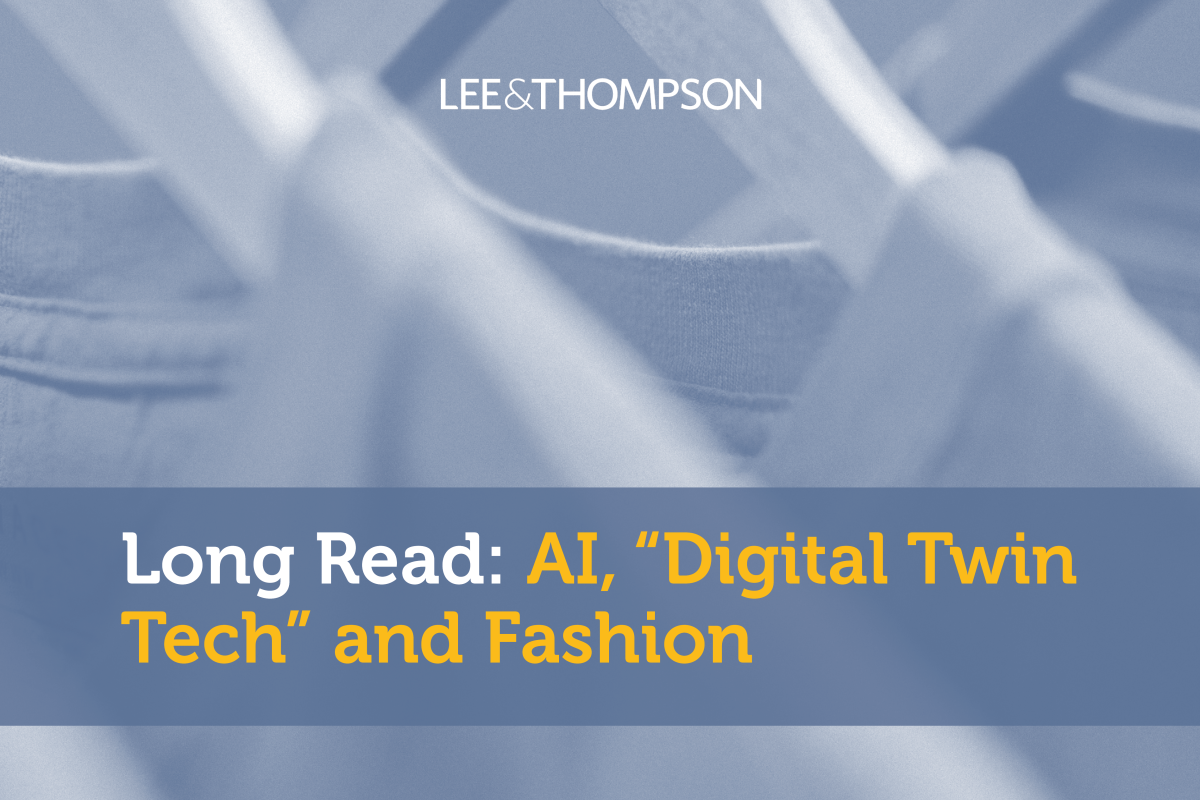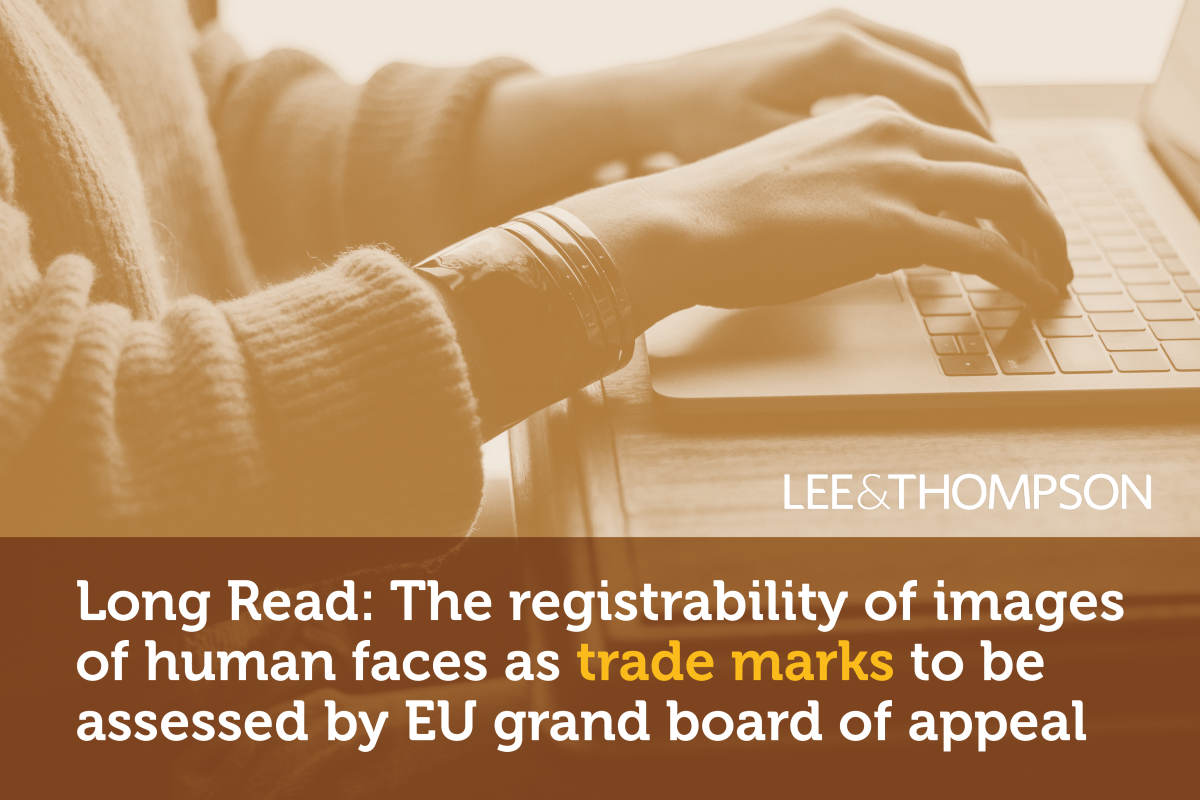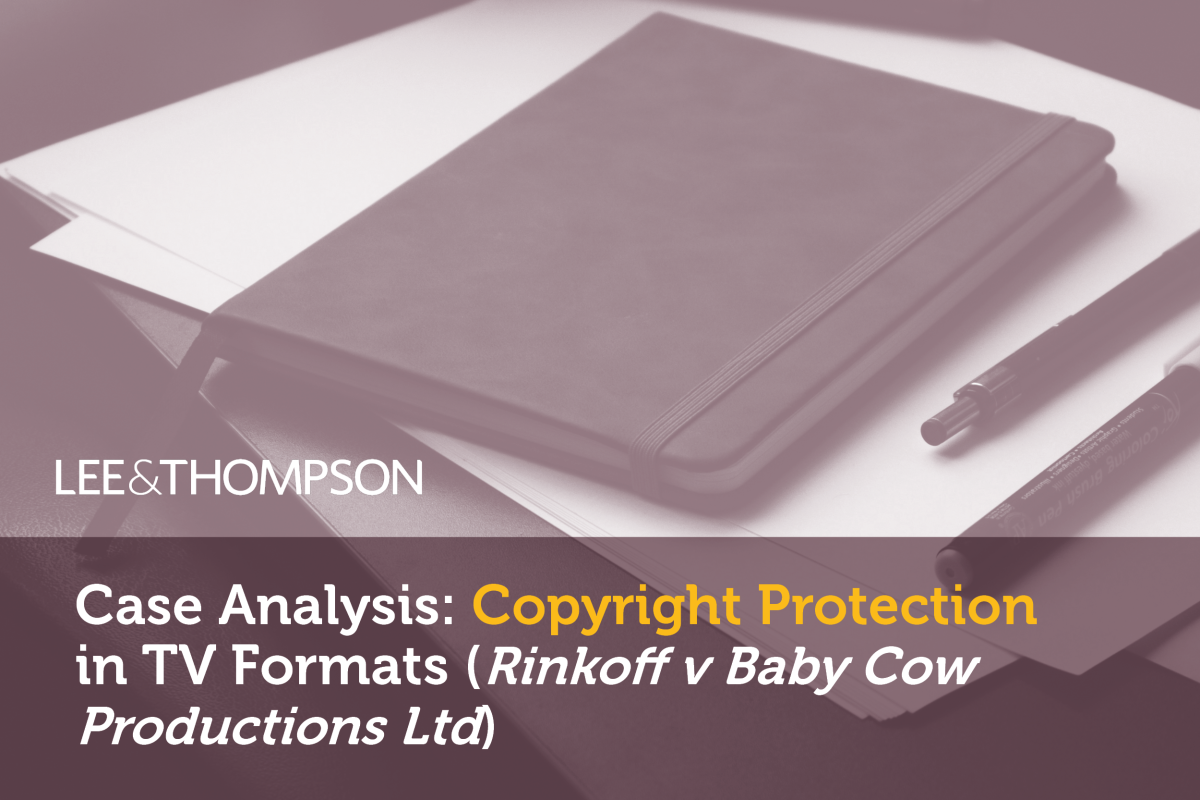
Long Read: AI, “Digital Twin Tech” and Fashion – An Update
31st March 2025
Written by Amanda McDowall and Sophie Anim.

It has recently been reported in the press that the retailer, H&M, will be producing digital replicas of 30 fashion models and using them in an upcoming ad campaign. These AI-made digital twins are set to be developed in partnership with models and modelling agencies: they will be used on social media and posters in lieu of their human counterparts as part of a new marketing initiative in the coming months.
Whilst it appears that the practicalities of this arrangement are still being refined, it seems that the models will contractually own the rights vesting in their digital clones. Technically, payment will be remitted to the digital twin and then this would automatically transfer to the applicable human model under a contractual framework.
This venture has far-reaching implications from, both, a commercial and legal perspective. For now, a few key points to consider are set out below:
Ethical considerations:
In many industries, including the entertainment and fashion businesses, the use of digital twins raises issues of an ethical nature. By way of example, models without a high-profile that are being engaged by commercial brands in respect of the usage of their digital clones will likely have limited power compared with their contracting counterparts. Whilst H&M has made the rights ownership position in respect of the digital replicas clear, and have also addressed the issue of consent, it seems that less scrupulous operators may have the opportunity to take advantage of up-and-coming talent. There are concerns that retailers may try to get talent to waive any contractual rights in their likeness or, more generally, make poor commercial decisions. Of course, affected parties may not have the financial resources or time to enforce their rights if they are at the start of their careers, for instance. This power imbalance between commercial brands and the individuals working with them should be taken into consideration. The use of digital twin tech is therefore particularly concerning given the prevalence of exploitation in the fashion industry generally.
The use of digital twin tech in the fashion business will heavily impact the livelihoods of members of the industry. Further, relying on AI-made imagery will eradicate the need for a typical photoshoot to occur. This means that make-up artists, stylists and photographers may lose out on work opportunities and suffer economic hardship as a result.
Limited legal protections:
It is fair to say that the legal landscape in the UK is not currently sufficiently equipped to deal with AI and the changes it is already engendering. In respect of this particular scenario, it seems that the protection available to models will be (mostly) limited to what is provided contractually in their agreements with commercial brands. Further, there is currently a patchwork of legal protections in the UK which ultimately do not fully cater to this situation:
- Image rights (i.e. proprietary rights in an individual’s personality and likeness) vary on a territorial basis and there is no codified law of image rights in the UK, specifically, which models could rely on. Privacy law will need to progress so that image rights are fully recognised and mirror French law, for instance, where unauthorised usage of an individual’s image commercially would be held to invade their right to privacy.
- The tort of passing off could be of assistance in instances where the AI digital twin tech is used in respect of a particularly famous or well-known model, so that the commercial value of the model’s brand and reputation could be protected.
- Uncertainty surrounds the scope of registered trade mark protection afforded to photorealistic images of humans (and their faces). In order for such images to function as trade marks, they will need to be used in a consistent and systematic manner and as an indicator of origin of the applicable goods and services. In the event models are able to succeed in registering their digital twin images (to the extent they own them) as trade marks, there are cost implications associated with enforcing their rights. For more information on this subject, please see an article produced by members of our Brand Protection team here.
- It is not unreasonable to anticipate scenarios in which the model’s doppelganger image could be digitally manipulated in a malicious manner resulting in a “deepfake” image being distributed online. There have been some advancements in terms of the criminal legislative framework in place to protect victims (e.g. The Online Safety Act). However, it remains to be seen whether these protections will ultimately serve models in the event digital twin tech usage goes wrong.
Commercial appeal:
More generally, we query the extent to which the usage of digital twin tech in the fashion industry will commercially appeal to consumers. We will have to wait to see whether the public will be incentivised to purchase fashion items as a result of AI-generated images used in advertising efforts.
Overall, the fast-paced development and deployment of AI initiatives seems to be surpassing the time it is taking for robust legal protections to be put in place for creatives in the UK and beyond. The use of digital twin tech in the creative industries therefore raises broader issues in relation to law and policy that need to be dealt with at the highest level. Please watch this space for more updates in this evolving area.
In the meantime, if you have any queries about the impact of AI on your business or brand, please contact a member of our Dispute Resolution team.

